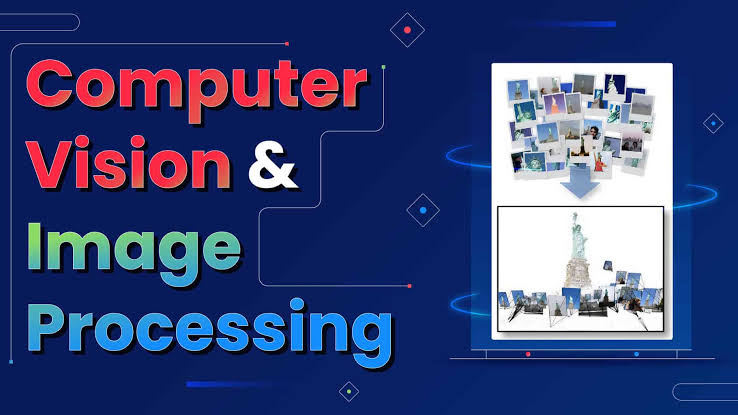Computer Vision in Image Processing
Computer vision subset of artificial intelligence, has rapidly advanced in recent years. It has revolutionized fields from healthcare to automotive technology. At its core computer vision focuses on enabling machines to interpret and understand visual information from the world around them. This capability allows computers to analyze images and videos. It enables machines to extract meaningful data and make decisions based on visual input. Key to its functionality are image processing and analysis techniques. These techniques form the fundamental building blocks of computer vision systems.
Image Acquisition and Preprocessing
The process begins with image acquisition. Digital cameras or sensors capture visual data. This raw data often undergoes preprocessing to enhance quality and remove noise. Techniques such as noise reduction filters contrast adjustment and color normalization ensure subsequent analysis steps receive clean reliable input. Image resizing cropping may also be applied to standardize size and aspect ratio of images. This facilitates uniform processing across datasets.
Image Enhancement and Restoration
Image enhancement techniques aim to improve visual quality of images for better analysis. These methods include sharpening filters to enhance edges. Brightness and contrast adjustments improve visibility. Histogram equalization can enhance image details in low-light conditions. Restoration techniques focus on recovering or enhancing degraded images due to factors like blurriness. Motion blur or compression artifacts are other factors. Algorithms such as deblurring and denoising restore image clarity. Detail restoration is crucial for accurate analysis in applications like medical imaging. Satellite photography also benefits greatly.
Feature Extraction and Representation
Once preprocessed, images undergo feature extraction to identify and capture meaningful patterns or characteristics. Features may include edges, corners, textures, shapes, colors, or more complex structures depending on the application. Popular techniques for feature extraction include edge detection using algorithms like Sobel or Canny, corner detection with Harris or FAST algorithms, and texture analysis using statistical measures or frequency domain methods. These extracted features serve as inputs for subsequent analysis and decision-making processes within computer vision systems.
Segmentation and Object Recognition
Segmentation divides an image into meaningful regions or segments based on similarities in color, intensity, or texture. It plays a critical role in identifying and delineating objects within an image. Techniques such as thresholding, clustering (e.g., k-means), and region-based methods (e.g., watershed) segment images into distinct regions, enabling precise object boundary delineation and analysis. Object recognition builds upon segmentation by identifying and classifying objects within images using machine learning algorithms. Deep learning models, particularly convolutional neural networks (CNNs), have achieved remarkable success in object recognition tasks by learning hierarchical representations of visual features directly from pixel data.
Pattern Recognition and Classification
Pattern recognition involves identifying patterns or structures within images and categorizing them into predefined classes or categories. Classification algorithms, such as support vector machines (SVMs), decision trees, or neural networks, learn to map extracted features to specific object classes based on training data. Supervised learning techniques rely on labeled datasets to train models, while unsupervised learning methods explore patterns and structures in data without predefined labels. Pattern recognition and classification are fundamental in applications ranging from facial recognition and autonomous driving to industrial quality control and satellite image analysis.
Object Detection and Localization
Object detection goes beyond classification by identifying and localizing multiple objects within an image. It involves predicting bounding boxes around objects of interest and assigning class labels to each detected object. Popular techniques include region-based CNNs (R-CNN, Fast R-CNN, Faster R-CNN), single-shot detectors (SSDs), and You Only Look Once (YOLO), which balance accuracy and speed for real-time applications. Object localization techniques refine bounding box predictions to precisely outline object boundaries, crucial for tasks like autonomous navigation, surveillance, and augmented reality.
Motion Analysis and Tracking
In video analysis, computer vision extends beyond static images to analyze temporal changes and motion patterns over time. Motion analysis techniques include optical flow estimation, which tracks the movement of objects between frames, and background subtraction, which identifies moving objects against stationary backgrounds. Object tracking algorithms like Kalman filters, mean-shift, or deep learning-based trackers follow objects across frames, enabling applications such as video surveillance, action recognition, and sports analytics.
Applications and Real-World Impact
The application domains of computer vision are vast and diverse, spanning healthcare, automotive, robotics, agriculture, security, and more. In healthcare, computer vision aids in medical imaging interpretation, disease diagnosis, and surgical planning. Autonomous vehicles rely on computer vision for environment perception, lane detection, and pedestrian detection to navigate safely and efficiently. Robotics uses computer vision for object manipulation, navigation, and human-robot interaction. Agricultural applications include crop monitoring, yield prediction, and pest detection using drone-mounted cameras and satellite imagery.
Challenges and Future Directions
Despite its advancements, computer vision faces challenges such as variability in image quality, occlusions, lighting conditions, and complex backgrounds. Addressing these challenges requires robust algorithms, large-scale annotated datasets, and advancements in sensor technology. Future directions in computer vision research include improving interpretability of deep learning models, integrating multimodal sensory inputs (e.g., combining vision with other sensor data), and developing ethical guidelines for deployment in sensitive domains like privacy and security.
